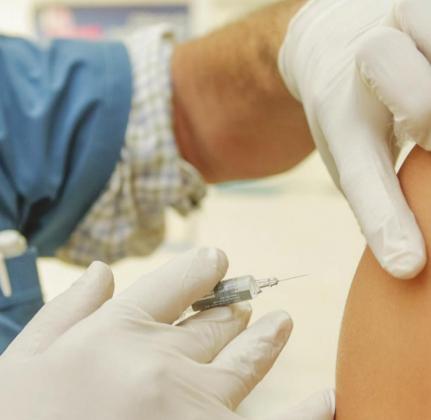COVID-19 vaccines may be coming soon but will not be available to most Texans for months.
The vaccine is expected to initially be in short supply and will be first distributed to a state-selected group of people considered to be essential workers or most vulnerable to being severely sickened.
Officials are preparing for the massive undertaking of distributing a vaccine that may require multiple doses and subzero storage temperatures across a state that covers 270,000 square miles and some 170 rural counties. Health experts are concerned about vaccinating people in Texas’ most rural pockets, where medical professionals are scarce and struggling small-town hospitals have been closing.
Early estimates from the Texas Department of State Health Services found there are more than 5 million people who are vulnerable or work in front-line jobs that increase their exposure risk. That includes more than 3.9 million people who are 65 or older, more than 638,000 health care personnel, more than 327,000 acute care hospital employees, more than 137,000 nursing home residents and more than 66,000 emergency medical workers.
With a vaccine for the coronavirus is on the horizon, and Gov. Greg Abbott has said the state is ready to swiftly distribute doses to combat the pandemic. But health officials say tried and true distribution methods in Texas may be insufficient for coronavirus vaccines that require subzero transportation and storage temperatures and require people to come back for a second dose. The task is made more difficult because the Texas Department of State Health Services, which is largely responsible for the distribution effort, won’t know which vaccines it’s receiving, and how many doses, until one or more is approved by the U.S. Food and Drug Administration.
They will also have to combat misinformation and persuade vaccine skeptics — and those unnerved by the coronavirus vaccines’ historically swift development — of the benefits of being inoculated. In the 2019-20 flu season, only about 37% of adults younger than 65 received a flu vaccine. The rate was about 65% for seniors.
“We haven't seen any efforts that are this broad since probably a polio vaccination in the 1950s,” said Dr. Mark McClellan, a former head of the FDA who has advised Abbott about the pandemic. “The people who are most likely to benefit from vaccination are people who may have difficulty connecting to health care,” such as elderly people and residents of low-income communities who often lack health insurance, he added — compounding the logistical challenges.”
In most other respects, the distribution process is being dictated and paid for by the federal government, which has said the vaccine will be free to vulnerable people who can’t afford it and that providers will be able to bill health insurers for immunizing covered patients. The federal government has partnered with pharmacies like CVS and Walgreens to offer the vaccine to nursing home residents and workers and, later, the general public once supplies become more available.
Health officials in Texas, meanwhile, have sent the federal government a rough plan for how they will prioritize getting vaccines to populations that need it most. They are now quickly recruiting pharmacists and doctors to sign up to receive shipments of a vaccine and trying to teach providers how to use an electronic system to record vaccinations and track when people are due for a second shot.
Of Texas’ 254 counties, 38 did not yet have a provider signed up to receive vaccine shipments as of Nov. 18.
The vaccine planning is happening as coronavirus infections are soaring in the state, a fatigued public grows reluctant to follow rigid safety guidelines and state officials say they are uninterested in renewing more aggressive steps to tamp down the virus’ spread, such as ordering nonessential businesses to close.
With two pharmaceutical companies announcing that they are close to requesting FDA approval for the vaccines, it is looking increasingly likely that immunizations will begin while the pandemic is still raging.
Pfizer and its German partner BioNTech, and Moderna, makers of the two vaccine candidates that are furthest along in development, have predicted that they could be able to produce enough vaccine doses for some 20 to 30 million Americans — a fraction of the U.S. population — before the end of the year.
Unlike a flu shot for adults, both companies’ coronavirus vaccines require people to get a second shot to be effective, and the Pfizer vaccine must be stored at ultra-cold temperatures — requiring specialized freezers that so far only about 120 providers in the state say they have access to.
Moderna’s recent announcement that its vaccine can be stored for 30 days in a standard refrigerator is a “game changer” for the state, said Imelda Garcia, associate commissioner for the Texas Department of State Health Services’ Division for Laboratory and Infectious Disease Services. That expands the number of providers
Early data suggests the COVID-19 vaccines in development are safe and effective, Lakey said, but because they rely on new biotechnology, public health officials need to work especially hard to build trust in high-risk communities.

